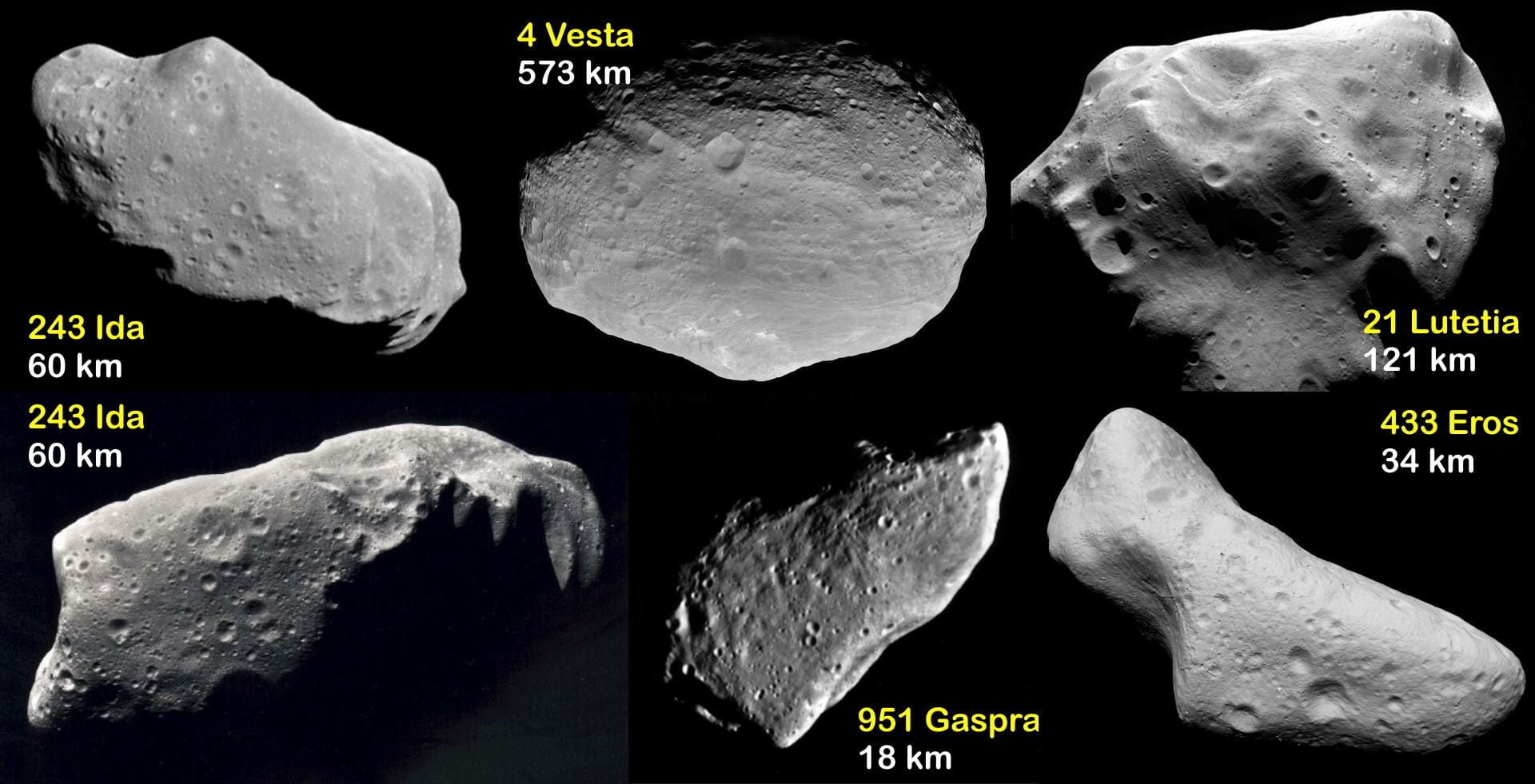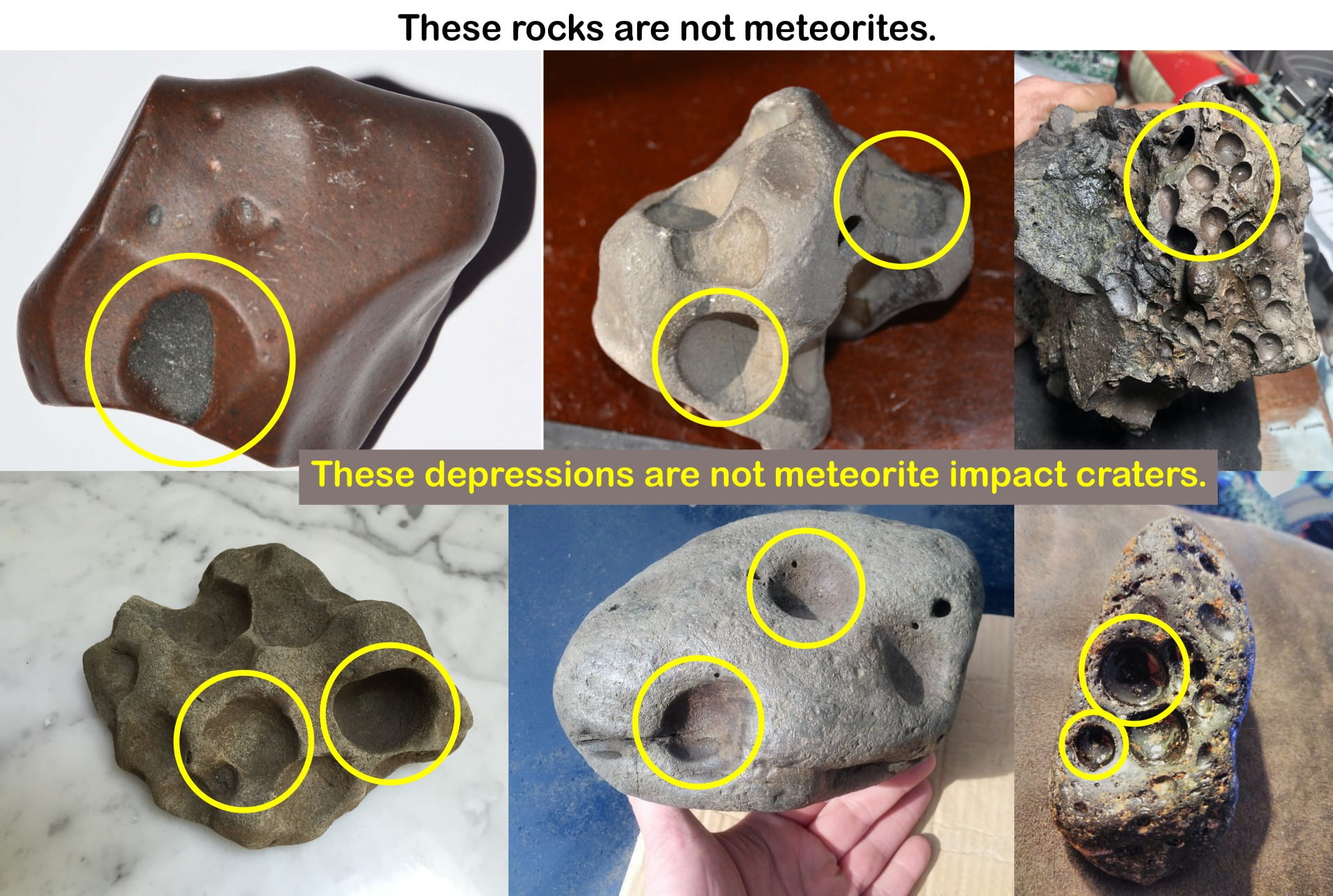Asteroids and meteoroids

Asteroids and meteoroids are small rocky objects, much smaller than planets, that orbit the sun. If it is larger than 1 meter in diameter, then it is an asteroid; if it is 2 millimeters to 1 meter in size, it is a meteoroid. If it is smaller than 2 mm, it is a micrometeoroid.
Meteorites are not asteroids or meteoroids, but most meteorites are pieces of asteroids that got ejected from the asteroid when the asteroid was impacted by another asteroid. The rock is not a meteorite until it lands on Earth, although some experts define the transition from meteoroid to meteorite as when the rock’s circumsolar (heliocentric) orbit is deflected by Earth’s atmosphere.


Meteorites do not have craters on them
Asteroids have craters formed during impact of smaller asteroids and meteoroids, but meteorites do not have craters. For small meteoroids, 90% of the mass is lost to ablation as it comes through Earth’s atmosphere. Any surface features like a crater gets erased by ablation.
